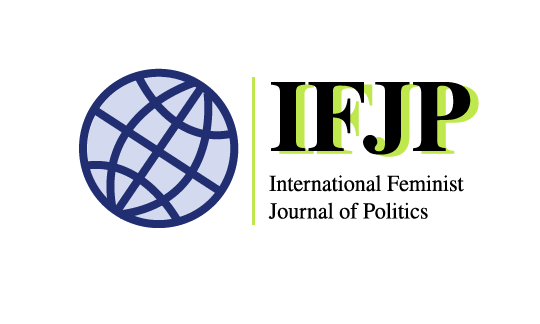Seeking the WPS at the Local: Voices from India’s Eastern Borderland
By: Dipti Tamang
Recently, India co-sponsored a Resolution tabled by Indonesia in the United Nations Security Council seeking women’s participation in peacekeeping missions on August, 28th, 2020 calling for “full, effective and meaningful” participation of women in peacekeeping operations. The Indian commitment to peacekeeping on the outside is ironical given the Indian state’s denial of conflict within its own territories disguised as a ‘law and order’ problem or ‘political disturbances’ etc. Such categorization has legitimized the Indian state’s use of draconian acts such as the Armed Forces Special Powers Act (AFSPA) in regions such as Nagaland and other parts of the North-East India- categorized as ‘politically disturbed areas’- into ‘garrisoned spaces.’
India’s Eastern borders is home to numerous- small and big, visible and hidden conflicts, direct outcomes of the Indian state’s- failure to recognize diversity in identities, cultures, histories and the high-handed, securitized approaches in addressing grievances emerging from such cultural diversities. The political conflict in Nagaland and Darjeeling Hills- geographically located in the Eastern peripheries and part of the larger Himalayan region is home to the oldest conflicts in the region- over questions of identity, belonging, statehood and sovereignty. Unless these conflicts are politically resolved outside of non-security centric framework, the nature of conflicts may change but it will forever render these places into ‘politically disturbed’ spaces.
Rendering visible the ‘Non-Participating’ Women’s groups
Following India’s Independence, the Naga political demand for sovereignty has over time introduced both insurgency and state sponsored militarization in the region. The Naga Mother’s Association (NMA) in Nagaland has played a predominant role in the political conflict of Nagaland. The NMA and other women’s groups have a clearly defined vision of peace- that which demands an end to militarization, conflict and injustice. The Naga women’s groups have traversed an arduous path to articulate their rights not just as mothers and Naga women but as political figures which, as opined by Prof. Dolly Kikon, ‘spells a wave of hope for the tribal society.’ The political demands of Naga women to contest elections caused a furor within the male-dominated tribal society, branded as ‘anti-Naga’, which has neither deterred nor weakened the women’s groups from fighting for the Naga Cause. Rather such confrontation with patriarchy has strengthened their commitment to envision justice with gender equality as an intrinsic part of the Cause.
Women’s groups have been in the forefront of the political demand of the Indian Gorkha/Nepali community’s (the majority residing in Darjeeling Hills geographically located in West Bengal, Eastern India) demand for the separate state of Gorkhaland- outside of West Bengal. Met with repression by both the Indian state and state of Bengal, peace is both temporary and fragile, often resulting in the Darjeeling Hills been thrust into a state of conflict with bandhs(shutdowns), arson, violence and arrests becoming the norm. Women have a formidable presence in the ethno-nationalist movement for the Gorkha Cause especially in the last agitation of 2017, where Darjeeling Hills was completely shut down for a period of 104 days. Despite women taking center-stage in the ethno-nationalist movement, the women’s groups are yet to carve out an independent space for themselves in the organized public, political spaces of Darjeeling Hills. Constrained by their designation as the Women’s wing of the prominent regional and local parties, the Gorkha Cause occupies center-stage and questions of gender are yet to be understood as an integral part of this Cause.
Moving beyond the Formal Structures of Power: making Participation more Meaningful
Constrained by the internal gender regimes, women’s groups and their contributions/engagement with conflicts are therefore silenced and rendered invisible in the conflicted spaces of Nagaland and Darjeeling Hills. The women’s groups from these regions are yet to find spaces as ‘full and meaningful participants’ in the ‘high tables of peace’ globally, nationally and locally despite being in the forefront of conflict in these spaces. Further the Indian state’s denial of conflict dismisses both conflict and its gendered consequences which remain hidden from the global policy discourse on Women, Peace and Security in conflict. Twenty years after the introduction of the WPS- it has enabled women to contribute significantly in shaping the discourses on security and conflict in different parts of the world. However, for Participation to become more meaningful it also requires an engagement with the organic, ‘non-participating’ women’s voices to be made visible- expanding the idea of Participation beyond the formal structures of power. The articulations of peace by these organic women’s groups are deeply intertwined to questions of justice and equality; engagement with such articulation will therefore contribute significantly in enriching the WPS’s vision of a Feminist Peace.
Read the full article here: ‘Rethinking “participation” in Women, Peace and Security discourses: engaging with “non-participant” women's movements in the Eastern borderlands of India‘
Each blog post gives the views of the individual author(s) based on their published IFJP article. All posts published on ifjpglobal.org remain the intellectual property and copyright of the author or authors.
Dipti Tamang, PhD is currently working as Assistant Professor, Darjeeling Government College. She has also recently been awarded with the Fulbright-Post Doctoral grant, (2020-2021). Her areas of interest are Feminist Peace and Security, Gender and Regional identities with specific focus on the Eastern Himalayas. She is currently enjoying working as part of the Confluence Collective- a platform for visual storytelling of the Darjeeling Hills and Sikkim in the Himalayan region.



